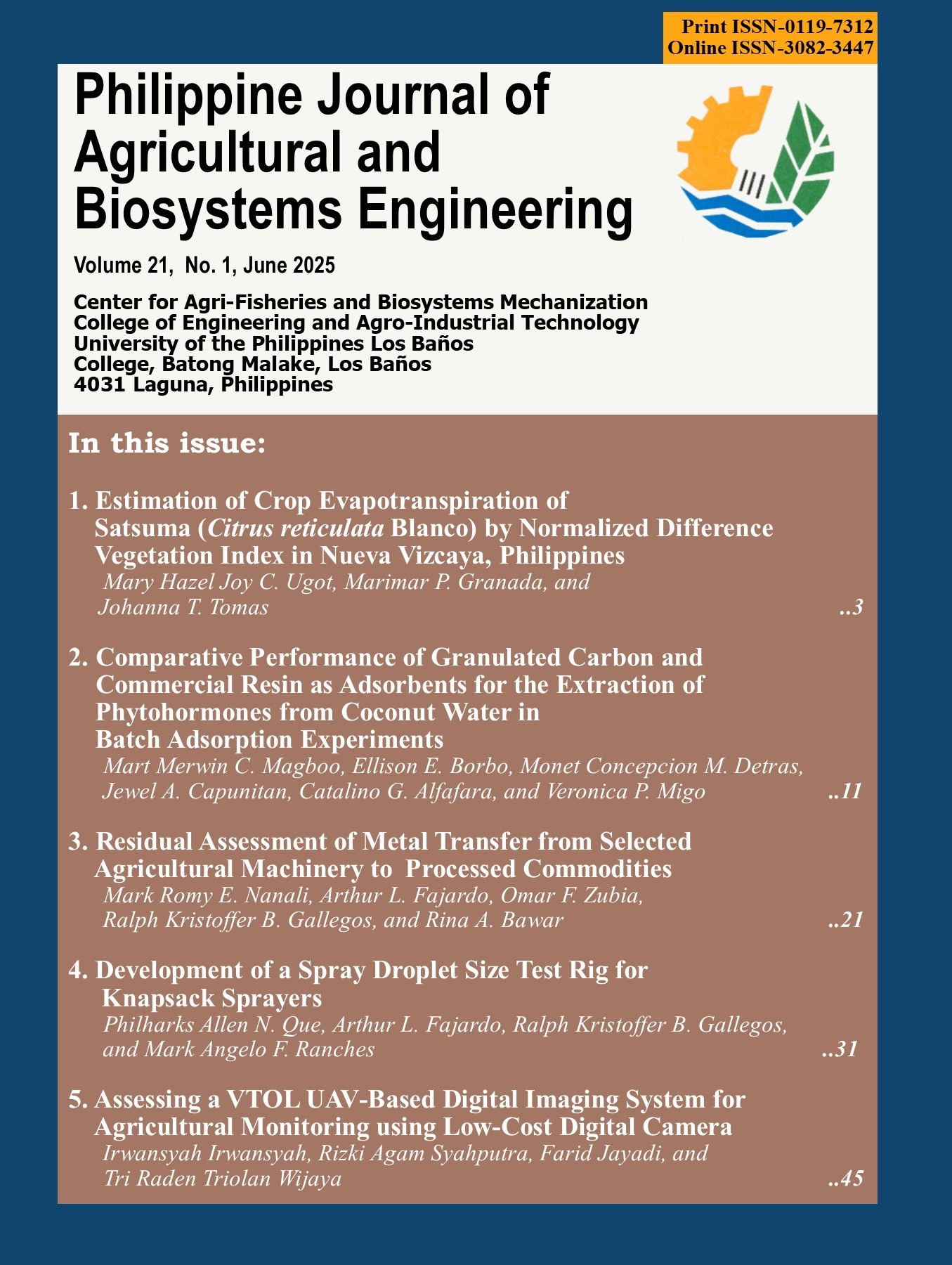Estimation of Crop Evapotranspiration of Satsuma (Citrus reticulata Blanco) by Normalized Difference Vegetation Index in Nueva Vizcaya, Philippines
Abstract
Evapotranspiration has a major impact on agricultural productivity particularly in maintaining soil moisture level and sustaining plant health. Crop coefficient (Kc) is an important component for evaluating crop evapotranspiration (ETc) as it incorporates crop characteristics and average effects of evaporation from the soil. This study estimated the crop evapotranspiration of Satsuma in Malabing, Kasibu, Nueva Vizcaya using Kc values from remotely sensed NDVI data. Three neighboring areas with an area of one hectare were selected for the vegetative, early fruiting, and mature fruiting stages. Satellite imagery from Landsat 9 was used in determining NDVI values which are significant in the estimation of Kc values. It was found that the computed Kc values of citrus for the vegetative stage in all the three phases (initial, mid, and late) were 0.41, 0.46, and 0.48, respectively. The Kc values for the early fruiting were 0.47 (initial), 0.45 (mid), and 0.46 (late) and for the mature fruiting stage the values were 0.65(initial), 0.58 (mid), and 0.63 (late) which follows the trend of the FAO Kc values that decrease in the mid phase. The estimated crop evapotranspiration using these Kc values shows that the highest for the vegetative stage is in the month of August and May for both early and mature fruiting stage, while the lowest ETc values were recorded in the month of January for the vegetative and December for both early and mature fruiting stage. Thus, these computed Kc values provide a site-specific value needed for the computation of crop water requirement and irrigation scheduling for citrus production in Kasibu, Nueva Vizcaya, Philippines.


